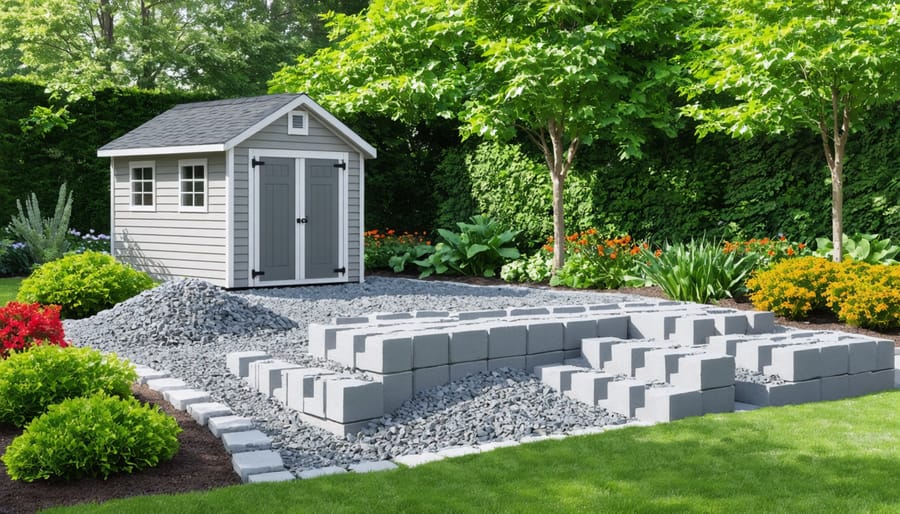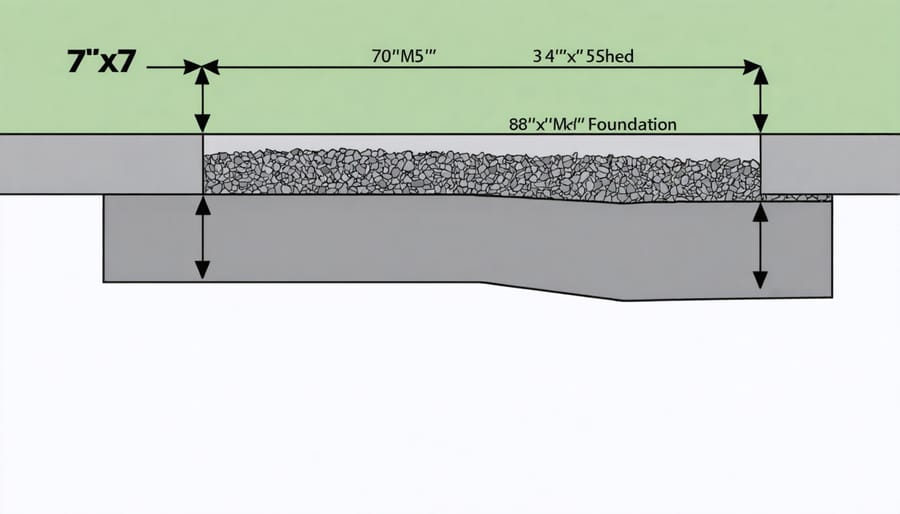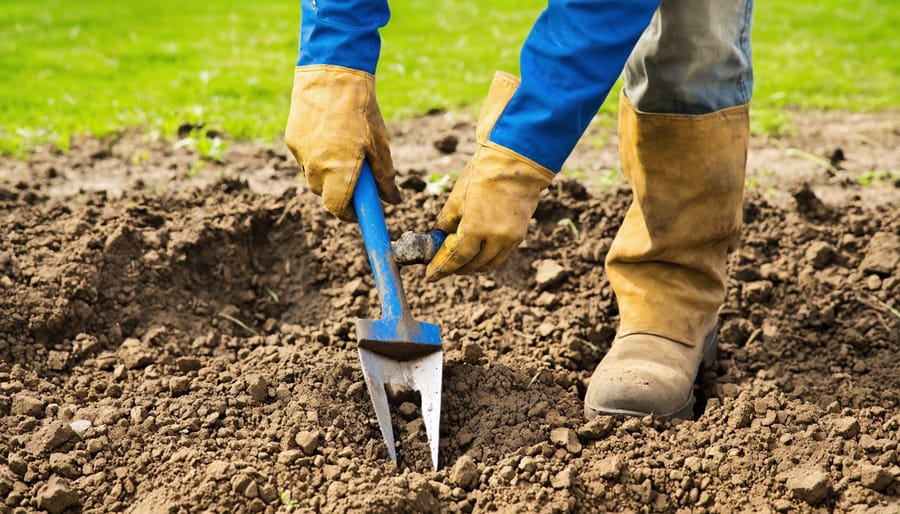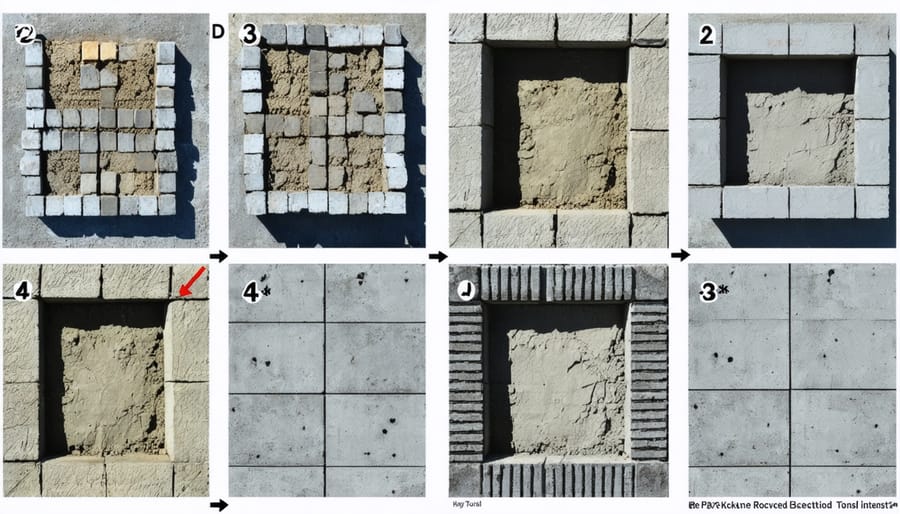Build a Rock-Solid Eco-Friendly Foundation for Your 7×7 Shed

Build a rock-solid 7×7 shed foundation that protects your investment and the environment with precise site preparation and sustainable materials. Creating this compact yet crucial base requires careful planning before choosing the right storage shed. Start by excavating 6 inches deep, ensuring perfectly level ground with a 2% grade for proper drainage. Install a weed barrier made from recycled materials, followed by a 4-inch layer of crushed stone or gravel. This foundation size perfectly balances stability and eco-consciousness, supporting up to 2,000 pounds while minimizing environmental impact.
Position concrete blocks or pier foundations at critical load-bearing points, using pressure-treated lumber for the frame to create a lasting, environmentally responsible base. Whether you’re planning a garden tool storage or a compact workspace, this foundation approach ensures decades of reliable service while maintaining soil permeability and natural drainage patterns.
Sustainable Foundation Options for Your 7×7 Shed
Recycled Concrete Block Foundation
Recycled concrete blocks offer an eco-friendly and cost-effective foundation solution for your 7×7 shed. These blocks, often salvaged from demolition sites or construction projects, provide excellent stability while reducing environmental impact. Start by sourcing clean, intact blocks from local recycling centers or construction salvage yards.
Layout your foundation by placing blocks at each corner and at 4-foot intervals along the perimeter. Ensure each block is level both horizontally and vertically using a spirit level. For added stability, dig 2-3 inches into the ground at each block location and fill with gravel before placing the blocks.
Consider using concrete pier blocks with built-in brackets specifically designed for shed foundations – these can often be found second-hand. When installing, maintain consistent spacing and check diagonal measurements to ensure your foundation is square. Remember to account for proper drainage by slightly elevating the center blocks or creating a subtle slope away from your shed’s entrance.
Pro tip: Before using recycled blocks, thoroughly inspect each one for cracks or significant wear that could compromise structural integrity. Clean off any old mortar or debris to ensure proper placement and stability.
Permeable Gravel Pad Foundation
A permeable gravel pad foundation offers an eco-friendly and effective solution for your 7×7 shed. By using recycled gravel, you’re not only creating a stable base but also contributing to environmental sustainability. Start by excavating the area to a depth of 4-6 inches, making sure to remove all grass, roots, and organic matter.
Layer the bottom with landscaping fabric to prevent weed growth while maintaining proper drainage. For optimal results, use a mix of different-sized recycled gravel. Begin with a layer of larger stones (1-2 inches) at the bottom, followed by medium-sized gravel, and finish with smaller crushed stone on top. This graduated approach ensures excellent water drainage and prevents settling.
Compact each layer thoroughly using a plate compactor or hand tamper. The final surface should be level but with a slight slope (about 1 inch per 8 feet) away from the shed’s intended location to direct water away from the structure. This foundation type is particularly effective in areas with regular rainfall, as it allows water to filter naturally into the ground rather than pooling around your shed.

Site Preparation with Minimal Environmental Impact
Natural Leveling Techniques
Leveling your 7×7 shed site naturally doesn’t require heavy machinery or harmful chemicals. Start by removing vegetation and organic matter using a garden rake and shovel. For precise leveling, use a long spirit level and wooden stakes to establish your reference points around the perimeter.
Create a simple string level by tying twine between stakes at equal heights. This will help you identify high and low spots that need attention. For minor adjustments, use a steel rake to redistribute soil, working from the edges toward the center. In areas that need filling, use clean fill dirt or crushed stone, tamping each layer with a hand tamper for stability.
For eco-friendly erosion control, consider planting low-growing ground cover around your foundation’s edges. A slight slope away from the shed (about 1 inch per 4 feet) will ensure proper drainage without disrupting the natural landscape. Remember to check your progress frequently with the spirit level, making small adjustments as needed until you achieve a perfectly level surface.

Soil Conservation Practices
When preparing your shed foundation, proper soil conservation is crucial for maintaining your yard’s ecological balance and creating sustainable yard solutions. Before excavation, carefully remove the top layer of soil (typically 4-6 inches) and store it separately from other excavated materials. This nutrient-rich topsoil is valuable and can be reused in other areas of your garden or landscaping projects.
Create a designated storage area for the removed topsoil, keeping it covered with a tarp to prevent erosion and protect it from harsh weather. Consider adding temporary barriers around your work area to prevent soil runoff during construction, especially if you’re working on sloped terrain.
Once your foundation is complete, redistribute the saved topsoil around the perimeter of your shed. This helps establish proper drainage and provides rich soil for planting beneficial ground cover or native plants. Remember to grade the soil away from your shed’s foundation to prevent water accumulation, maintaining both soil integrity and foundation stability.
Green Materials and Installation Methods
Sustainable Material Selection
When selecting materials for your 7×7 shed foundation, choosing sustainable options not only benefits the environment but can also provide excellent durability and value. Consider using recycled concrete aggregate as a base material – it’s an eco-friendly alternative that performs just as well as virgin materials. Many local concrete suppliers now offer this option, which helps reduce construction waste in landfills.
Locally sourced gravel and crushed stone are excellent choices for the foundation base, as they minimize transportation emissions and support your local economy. Look for suppliers within a 50-mile radius of your location. For the actual foundation blocks or piers, opt for those made from recycled plastic or composite materials, which are incredibly durable and resist rot better than traditional options.
Reclaimed timber can be an excellent choice for the foundation frame, provided it’s properly treated and in good condition. Many architectural salvage yards offer high-quality recovered wood at competitive prices. For moisture barriers, select products made from recycled materials or natural alternatives like bamboo-based sheets.
When purchasing foundation materials, ask suppliers about their sustainability practices and certifications. Many now offer detailed information about their products’ environmental impact. Remember that sustainable doesn’t always mean more expensive – many recycled materials are competitively priced and often outlast their conventional counterparts.

Low-Impact Installation Steps
Begin by marking your shed’s footprint using eco-friendly marking paint or natural string. Clear the area of vegetation, being careful to preserve any plants you can relocate. Save the topsoil for later use in your garden.
Level the ground using hand tools rather than heavy machinery to minimize soil disruption. For optimal drainage, create a slight slope away from the center (about 1 inch per 4 feet). Lay a permeable landscape fabric to prevent weed growth while allowing water filtration.
Create a frame using naturally rot-resistant cedar boards. Position your foundation blocks at each corner and at 3-foot intervals along the perimeter. Use recycled plastic or composite foundation blocks when possible, as these are more environmentally friendly than concrete.
Fill the interior with a 4-inch layer of gravel, preferably locally sourced or recycled. Tamp down manually using a hand tamper. This creates a stable, well-draining base while maintaining soil permeability.
Install pressure-treated lumber for the floor frame, ensuring it’s level on all sides. Consider using reclaimed wood if available, but ensure it’s structurally sound. Space floor joists 16 inches apart on center for optimal support.
Finally, add corner braces for stability and check all measurements one last time before proceeding with shed construction. This method minimizes environmental impact while creating a lasting foundation for your shed.
Maintenance Tips for Long-Term Sustainability
Regular maintenance of your 7×7 shed foundation is crucial for both longevity and environmental responsibility. By following these eco-friendly shed maintenance practices, you’ll protect your investment while minimizing environmental impact.
Start by inspecting the foundation quarterly for signs of settling or cracking. Address any issues promptly to prevent water damage and soil erosion. Keep drainage channels clear of debris and maintain proper grading around the foundation to ensure water flows away from the structure.
Apply environmentally safe sealants every two years to protect concrete foundations from moisture damage. For gravel foundations, redistribute the stones annually to maintain even support and prevent low spots where water could pool.
Install rain gardens or native plants around your foundation to help manage water runoff naturally. These plants will also prevent soil erosion while creating a beautiful, low-maintenance landscape that supports local wildlife.
Monitor the area for invasive plants or root systems that could compromise the foundation’s integrity. Remove any vegetation growing too close to the foundation, but consider replanting with shallow-rooted ground cover at a safe distance.
Remember to check foundation vents regularly if you have them, ensuring proper airflow to prevent moisture buildup. Clean these vents using natural cleaning solutions to avoid introducing harmful chemicals into your garden soil.
Creating a solid foundation for your 7×7 shed is more than just a construction project – it’s an investment in sustainability and environmental responsibility. By choosing the right materials and following proper installation techniques, you’re not only protecting your storage investment but also contributing to a greener future. The use of recycled concrete aggregates and permeable surfaces helps manage water runoff effectively, while proper elevation prevents soil erosion and promotes better drainage.
Remember that a well-built foundation extends the life of your shed, reducing the need for replacements and minimizing waste. The key takeaways from this guide – choosing eco-friendly materials, ensuring proper drainage, and maintaining level ground – will help you create a foundation that’s both durable and environmentally conscious.
By implementing these sustainable practices in your shed foundation project, you’re making a positive impact on your local ecosystem while enjoying a sturdy, long-lasting storage solution. Take pride in knowing that your careful planning and environmentally mindful choices will benefit both your property and the planet for years to come.

